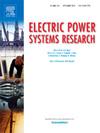量化灵活性资产位置对配电网服务的影响:电力系统和本地灵活性市场联合模拟
IF 3.3
3区 工程技术
Q2 ENGINEERING, ELECTRICAL & ELECTRONIC
引用次数: 0
摘要
本研究探讨了将地点敏感性因素纳入本地灵活性市场清算机制的有效性,以实现配电网中有效的拥塞管理和电压调节。研究开发了一个集中式本地灵活性市场优化模型,该模型考虑了技术和经济约束条件。该研究旨在探索数据可用性、数据质量和可靠数据交换的要求,以促进更广泛的灵活性服务,从而推动本地灵活性市场的发展。灵敏度系数,包括功率传输分配系数、电压灵敏度系数和变压器灵敏度系数,用于量化灵活性资产位置对拥塞管理的影响,并为清算规则提供依据。当灵活性由配电系统运营商采购时,这些静态指标不足以建立有效的本地灵活性市场清算规则。该方法在计算敏感系数时考虑了电网状态,从而更准确地评估灵活性投标,特别是位置对拥塞管理的影响。拟议的本地灵活性市场清算机制假定,拟议的本地灵活性市场运营商与配电系统运营商之间将进行持续通信,以实现动态、迭代式市场清算,从而确保电网数据的保护和更准确的投标评估。研究表明,纳入定位信息可显著提高基于本地灵活性市场的拥塞管理效率。为拟议的本地灵活性市场开发的模拟器为拟议的本地灵活性市场与配电网之间的互动提供了宝贵的见解。从选定的使用案例中得出的研究结果强调了基于位置的敏感性因素在拟议的配电网本地灵活性市场清算中的重要性。所提出的方法为优化拥塞管理和电压调节提供了一种有前途的解决方案,同时确保了分布式能源资源与配电网的有效整合。本文章由计算机程序翻译,如有差异,请以英文原文为准。
Quantifying the impact of flexibility asset location on services in the distribution grid: Power system and local flexibility market co-simulation
This research investigates the effectiveness of incorporating locational sensitivity factors into local flexibility market clearing mechanisms for effective congestion management and voltage regulation in distribution grids. A centralized local flexibility market optimization model is developed that considers technical and economic constraints. The study aims to explore the requirements for data availability, data quality, and reliable data exchange that can facilitate a broader range of flexibility services, thereby promoting the development of a local flexibility market. Sensitivity factors, including power transfer distribution factors, voltage sensitivity coefficients and transformer sensitivity coefficients, are used to quantify the impact of flexibility asset locations on congestion management and inform clearing rules. These static metrics are insufficient for establishing effective local flexibility market clearing rules when flexibility is procured by distribution system operators. The approach considers the state of the grid when calculating the sensitivity coefficients, which leads to a more accurate evaluation of flexibility bids, especially with regard to the impact of location on congestion management. The proposed mechanism for clearing the local flexibility market assumes continuous communication between the proposed local flexibility market operator and the distribution system operator for dynamic, iterative market clearing, which ensures the protection of grid data and a more accurate bid evaluation. The study demonstrates that the inclusion of locational information significantly increases the effectiveness of the proposed local flexibility market-based congestion management. The developed simulator for the proposed local flexibility market provides valuable insights into the interaction between the proposed local flexibility market and the distribution grid. The research results, derived from selected use cases, emphasize the importance of location-based sensitivity factors in the proposed local flexibility market clearing for distribution grids. The proposed approach offers a promising solution for optimizing congestion management and voltage regulation while ensuring efficient integration of distributed energy resources into distribution grids.
求助全文
通过发布文献求助,成功后即可免费获取论文全文。
去求助
来源期刊

Electric Power Systems Research
工程技术-工程:电子与电气
CiteScore
7.50
自引率
17.90%
发文量
963
审稿时长
3.8 months
期刊介绍:
Electric Power Systems Research is an international medium for the publication of original papers concerned with the generation, transmission, distribution and utilization of electrical energy. The journal aims at presenting important results of work in this field, whether in the form of applied research, development of new procedures or components, orginal application of existing knowledge or new designapproaches. The scope of Electric Power Systems Research is broad, encompassing all aspects of electric power systems. The following list of topics is not intended to be exhaustive, but rather to indicate topics that fall within the journal purview.
• Generation techniques ranging from advances in conventional electromechanical methods, through nuclear power generation, to renewable energy generation.
• Transmission, spanning the broad area from UHV (ac and dc) to network operation and protection, line routing and design.
• Substation work: equipment design, protection and control systems.
• Distribution techniques, equipment development, and smart grids.
• The utilization area from energy efficiency to distributed load levelling techniques.
• Systems studies including control techniques, planning, optimization methods, stability, security assessment and insulation coordination.
 求助内容:
求助内容: 应助结果提醒方式:
应助结果提醒方式:


